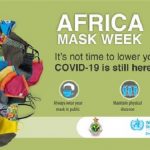Madam Speaker, as Zimbabwe joins the rest of the international community in the commemoration of 16 Days of Activism against Gender Based Violence, I stand to move a motion on the prevalence of gender based violence in the country. Let me begin by noting that gender-based violence (GBV) is very broad. It is violence that is directed at an individual based on his or her biological sex or gender identity. It includes physical, sexual, verbal, emotional, and psychological abuse, threats, coercion, and economic or educational deprivation, whether occurring in public or private life.
A substantial proportion of women experiencing physical violence also experience sexual abuse. Consequences of sexual violence are broad, they include guilt, anger, anxiety, depression, post-traumatic stress disorder, sexual dysfunction, somatic complaints, sleep disturbances, withdrawal from relationships and attempted suicide. At the outset, let me mention that GBV disproportionately affects women and girls, but its ripple effects cause severe harm to families and communities. Children can also be victims of, or witnesses to, domestic abuse. Sexual violence against men and boys is a significant problem. Rape and other forms of sexual coercion directed against men and boys take place in a variety of settings, including in the home, the workplace, schools, on the streets, as well as in prisons.
Madam Speaker, GBV statistics in our country is disturbing. The Zimbabwe Demographic Health Survey (ZDHS), in 2015 reported that 45 % of women aged 15 and 49 years had experienced some form of physical, emotional, or sexual violence at some point in lives. According to the 2019 Zimbabwe Multiple Indicator Cluster Survey (MICS), at least 10,121 women and girls between the ages of 15 and 49 had experienced sexual violence, with 55.1% of perpetrators being current husbands, partners, and other close relatives. The survey further highlighted that 39.4% of girls and women had experienced physical violence, with 71.4% perpetrators being the husband or partners. In 2015 according to ZimStats a total of 7 752 cases of rape were recorded up from 7 551 cases that were reported in 2014. At least 4 450 cases were recorded in 2010 before the figure went up to 5 446 in 2011 and down to 5 412 in 2012. In 2013 a total of 5 717 were recorded before the cases shot up to over 7 000 in 2014 and 2015. In the same vein, Child Line Zimbabwe in 2019 recorded 4,239 cases of children who were sexually abused, the majority by trusted close relatives and family members. At least 21 women are raped daily in Zimbabwe, translating to one woman being sexually abused every 75 minutes, statistics from the Zimbabwe National Statistics Office (ZimStat) revealed. The data shows a 42 % increase in rape cases over the past six years, a trend that is quite disturbing.
There is an unsettling of information on GBV worsening against the backdrop of the COVID-19 outbreak. During Covid-19 lockdown cases of gender based violence increased by 70% in the country, according to Musasa Project reports. Musasa Project is working closely with the Ministry of Women Affairs, Community and SMEs Development in the prevention and GBV risk mitigation, providing legal and counseling services to victims of violence. Reports from Musasa are that between January and March 2020, 5 581 cases were reported across the country; 10 849 between April and June, 6 189 in July and 3 685 in August. The trend indicates that more cases were reported during Covid-19 lock down period.
Continued next page
(303 VIEWS)


